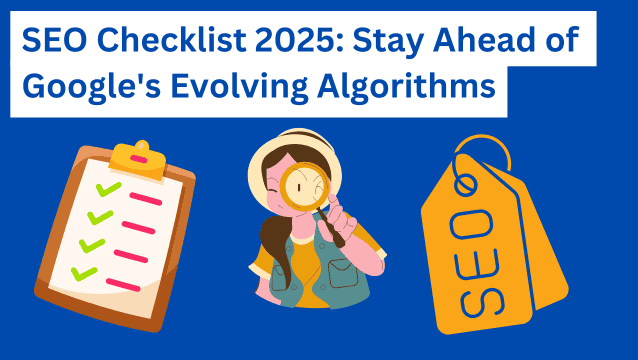Knowing how your customers behave and staying ahead of the curve is crucial for any brand aiming for visibility and growth. Google Trends, a free tool by the search engine giant, offers invaluable insights into what your audience is searching for, when, and where.
Leveraging this data can guide your content strategy, improve SEO, and keep your brand relevant in a rapidly changing market.
In this article, we’ll delve into the basics of Google Trends. We’ll illustrate its importance as a versatile tool for boosting your brand’s online presence.
Whether you’re a seasoned marketer or just getting started, understanding Google Trends is an asset you must pay attention to.
How to use Google Trends
Source: Google Trends
Google Trends is a free online tool provided by Google. It allows users to analyze the popularity of search queries over time.
The platform offers valuable insights into search volumes, geographical data, and related questions. It helps businesses tailor their strategies to consumer interests and emerging trends.
Now, it’s time to learn how to use Google Trends for your brand. We’ll guide you through it.
How Google Trends works
Google Trends analyzes data from Google Search and presents it in a user-friendly interface. It shows the popularity of search terms over specified periods and locations. You can filter data by categories, geography, and time range, generating graphs and reports. This robust data allows you to visualize trends and make data-driven decisions.
Where does Google Trends data come from? It comes from web, image, news, Google shopping, and YouTube searches.
This tool is powerful enough to provide information about virtually anything through the following searches.
Google Search
Google Search is the core search engine service provided by Google. It allows users to find websites, images, videos, and more based on their queries. This search utilizes complex algorithms to crawl, index, and rank web pages. Users get the most relevant and authoritative results.
Source: Google Search
Google News
Google News is a news aggregation platform owned by Google. It curates articles from various publishers worldwide. The service categorizes news stories based on topics and relevance, providing a real-time feed. You can narrow the results based on user interest and location.
Source: Google News
YouTube Search
YouTube Search is the search functionality within YouTube. It’s the world’s largest video-sharing platform and belongs to Google.
Users can search for videos, channels, and playlists using keywords or phrases. The search results offer a customized user experience based on relevance, view count, and other factors.
Source: YouTube
Pro tip: You can get alerts when specific names and topics appear online. Alerts are especially beneficial when people mention your business.
How to use Google Trends for SEO
Using Google Trends can substantially boost your SEO efforts. You can enter keywords relevant to your brand or industry to get their search popularity over time.
Also, you can use the tool to identify seasonal trends or emerging topics. By doing so, you can incorporate these into your content calendar and improve your content’s performance.
What other benefits can you get from learning to use Google Trends for SEO? You can analyze geographic data to tailor your SEO strategy for specific locations. Also, optimizing for local search is a huge benefit for new and small businesses.
Let’s go through some in-depth explanations for each action:
Keyword research
To find high-volume keywords for SEO optimization:
- Start by entering your niche-specific keywords.
- Review the tool’s search interest over time and related queries.
- Identify keywords with high search volumes.
- Focus on these keywords in your SEO strategy to improve your website’s visibility.
An extra benefit can be attracting organic traffic.
There are generally two approaches to analyzing keyword data. One examines it over extended durations, and the other examines shorter periods.
Google Trends allows you to view traffic patterns going back to 2004 and offers valuable insights into audience behavior over time. By doing so, you can identify:
- Rising long-term trends. A consistently rising trend line indicates you should focus your content creation on that topic.
- Declining long-term trends. If the trend graph is on a steady decline, this could mean a shift in the audience’s interests.
By learning how trends change, you can plan your marketing strategy accordingly. Using first-hand information about how users search for specific things will set a solid path.
Gather data about the most relevant keywords and incorporate popular search terms into your content.
Improve your SEO results by following these tips:
- In-depth keyword research. Use tools like SEMrush or Ahrefs. Get search volumes and questions related to the keywords you found on Google Trends.
- Content planning. Integrate these keywords into your content calendar. Ensure you’re covering trending topics that resonate with your audience.
- Title optimization. Insert the keyword into the title of your articles or web pages to establish relevancy.
- Header tags. Use relevant keywords and popular terms in header tags (H1, H2, H3). Break up content and signal importance to search engines.
- Body text. Use the keywords naturally within the content, avoiding keyword stuffing, which can penalize your SEO.
- Meta descriptions. Include keywords in the meta descriptions of your pages. Although this doesn’t directly affect SEO, it can improve click-through rates.
- URL structure. Use the keyword in the page’s URL to make it more search-engine-friendly.
- Internal linking. Use popular search terms as anchor text in internal links. Link to other articles and landing pages to improve page authority.
- Content updates. Keep your content updated with popular terms to maintain relevance and SEO value.
- Localized keywords: Boost local SEO. Incorporate popular search terms and geographic locations for businesses with a local focus.
- Image alt text: Use keywords in the alt text of images to make your site more accessible and improve SEO.
- Track performance. Use analytics tools to track how pages with new keywords perform. Adjust your strategy as needed.
Seasonal trends
Google Trends is an excellent tool for monitoring seasonal fluctuations in keyword popularity. Setting the time range to span many years allows you to identify recurring peaks and discover seasonal trends.
For example, if you notice that searches for “top summer travel destinations” spike every June, plan relevant content in May. Doing this is a great way to capitalize on interest.
Also, terms like “cool Halloween costumes” show predictable seasonal patterns. This data can help you plan content and promote your products before the search term trends.
Source: Google Trends
Using this data allows you to schedule your content and promotional activities to match these peaks and will benefit visibility and engagement.
Competitor analysis
Analyze competitors using Google Trends. Enter your competitors’ brand names or related keywords. Compare trends data to identify spikes or consistent interest in their offerings. Examine interests and related queries to uncover their strengths and weaknesses. You can also use a web crawler to automatically collect and analyze data from competitor websites, which will ultimately help you attract more customers.
Using Google Trends for content marketing
We’ve covered the benefits of Google Trends for identifying popular topics and keywords. Besides that, here’s how to use it for your content creation strategy:
- Visit Google Trends. To start your research, navigate to the Google Trends website.
- Search for initial keywords. Enter some basic keywords related to your industry or niche. You’ll get a general idea of how those terms trend over time.
- Analyze timeframes. Use the ‘Time range’ feature to see whether the keyword is temporary or has interest over time. Doing this can help you decide if the topic has long-term value.
- Check regional interest. Google Trends allows you to view search interests by region or country. You’ll need to know this if your brand caters to a localized audience.
- Compare keywords. Use the “Compare” feature to analyze multiple keywords simultaneously. You can identify which terms have the highest search volume and are more likely to increase traffic.
- Related queries. Scroll down to see related search terms that people are using. These can offer new ideas for topics or alternative keywords you may have yet to consider.
- Examine categories and subregions. For a more granular look, filter the trends data by categories like ‘Business’ or ‘Cience.’ You can also filter by subregions within a country.
- Seasonal trends. Note any seasonal peaks in search volume for your selected keywords. You can capitalize on this by timing your content accordingly.
- Export data. Google Trends allows you to export the data to a CSV file, which can be useful for more in-depth analysis or sharing insights with your team.
- Create a content plan. Use the insights gathered to inform your content calendar. Include the trending topics and keywords in upcoming articles, blog posts, or social media campaigns.
- Watch and adjust. After your content is live, use analytics to track its performance. If a keyword declines in popularity, you should update the content or focus on a new trending topic.
Google Trends can be a valuable asset in your content creation process. It can help you focus on topics and keywords that resonate with your target audience.
Analyzing audience interests
Google Trends gives valuable insights into the interests and preferences of your target audience.
- To analyze them effectively, start by entering relevant keywords or topics.
- Explore related queries to uncover specific interests within your niche.
- Use the geographic breakdown to understand regional variations.
- Observe historical trends to spot seasonal or long-term shifts in preferences.
This data equips you to create tailored content, marketing campaigns, and products. Content that resonates with an audience drives engagement and growth.
This approach is particularly valuable for niche industries like custom software development, where market needs and keyword trends can shift quickly based on emerging technologies and business demands. Understanding real-time search interest helps tailor both content and product offerings more precisely.
Creating targeted content
Harnessing Google Trends data for targeted content creation involves strategic insights. Take a look at these tips on using this data to create content that resonates with the target audience:
- Focus on trending topics and keywords that align with your niche or industry.
- Time your content releases to match with peak interest periods revealed by the tool.
- Use regional data to customize content for specific geographic markets.
- Explore related queries to identify supplementary content ideas.
- Adapt your content strategy as trends evolve, ensuring it remains fresh and resonates with your audience.
Content marketing trends
Google Trends can help you identify current content trends to include in your content marketing strategy.
There are benefits of incorporating popular content marketing trends into your brand strategy.
For example:
- Relevance. Staying current with trends makes sure your brand remains relevant to your audience. Align your messaging with what’s top of mind for them.
- Increased engagement. Trendy content catches more attention (likes, shares, and comments) and boosts engagement with your audience.
- Enhanced visibility. Trend-related content is more likely to appear in search results and social feeds. Appearing in more results increases your brand’s online visibility.
- Brand authority. Embracing trends shows your industry expertise. It positions your brand as a thought leader.
- Audience growth. Trend-focused content can attract new followers, expanding your audience base.
- Improved SEO. Trend-related keywords can improve your search engine rankings. Improved SERP rankings often result in increased organic traffic.
- Conversion opportunities. Engaged audiences are more likely to convert. More conversions mean increased sales and revenue.
- Adaptability. Brands that adapt to trends prove flexibility and responsiveness. In today’s ever-changing market, these are great qualities to have.
- Customer retention. Trend-conscious brands can keep existing customers. The key is to provide fresh and appealing content consistently.
Incorporating popular content marketing trends can positively impact your brand. Let’s explore some current trends and how you can use Google Trends to enhance each one:
- Short videos. Short videos reveal rising search interest in platforms and formats.
- Influencer marketing. Influencer marketing uncovers influencers and topics gaining traction.
- Mobile optimization. In mobile optimization, it identifies searches for mobile-friendly sites
- Personalized content. Personalized content shows interest in tailored experiences.
- Visual storytelling. It reveals popular visuals and storytelling techniques.
Increase your brand’s visibility using Google Trends
A highly visible brand has solid consumer trust and loyalty, creating a solid foundation for long-term success. Increased visibility boosts customer interaction.
With more than 8.5 billion Google searches per day, competition across search results has become fierce. Where hundreds of brands compete for attention, visibility can be the factor that sways consumer choice in your favor.
Source: Internet Live Stats
Investing in strategies to enhance brand visibility is crucial for your business. They deliver short-term gains and long-term sustainability.
What is brand visibility?
Brand visibility is when a brand’s target market sees and recognizes it. You can apply brand visibility strategies across various platforms and touchpoints. Possible options include online search results, social media, advertising channels, and word-of-mouth.
A significant social media trend impacting brand visibility is the use of influencer partnerships. Collaborating with influencers who have a substantial and engaged following can greatly enhance a brand’s visibility. Influencers can create authentic content that resonates with their audience, which can lead to increased brand awareness and trust.
High brand visibility gives your business or products a top-of-mind image for consumers. This makes them more likely to choose your brand over competitors when purchasing.
Shopify has created a guide to start using Google Trends for sales. The article provides excellent examples of brands that have improved their offerings using Google Trends. They get search volume and competition metrics to decide which product would sell better — for example, Alexis Jae Jewelry.
Incorporating Google Trends into your brand strategy can boost more than one field. It can benefit website traffic, social media engagement, and brand awareness.
Brands have successfully tailored their strategies to meet consumer interests. Leveraging real-time or historical data from Google Trends leads to gains in their digital presence.
Wrapping up
Google Trends is an invaluable tool for enhancing brand visibility. It refines content marketing strategies and optimizes SEO efforts. It offers real-time insights into consumer interests. You can then tailor your content and campaigns to what resonates with your audience.
As a marketer, you can identify trending topics, seasonal fluctuations, and regional preferences. This way, you’re better equipped to create content that ranks well, engages, and converts.
Overlooking this tool means missing out on a wealth of data that could drive your brand’s visibility and growth. Incorporate Google Trends into your brand strategy. Stay competitive in today’s fast-paced world of online search!


